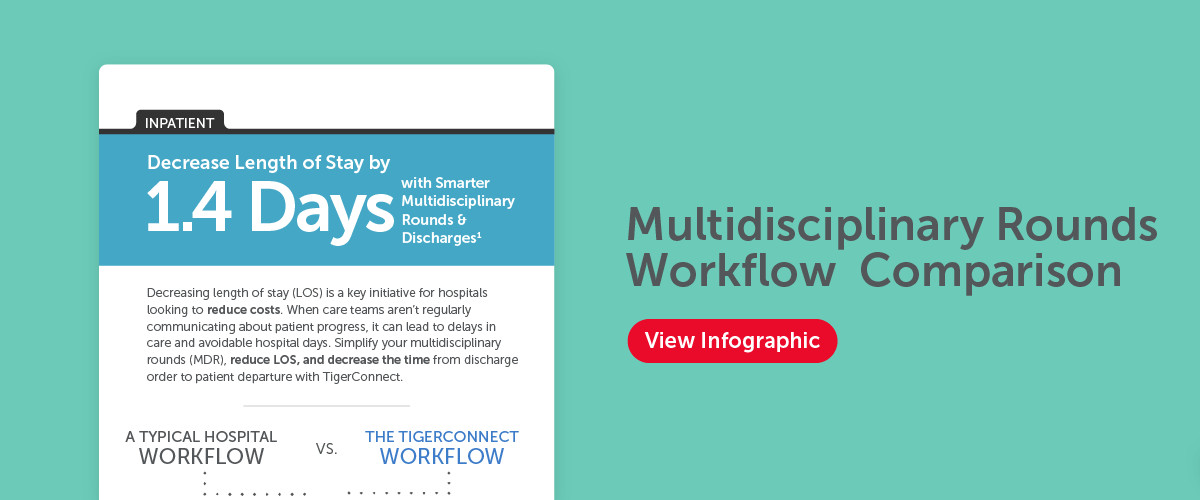Home / Blog /
The Hidden Costs of Avoidable Days in Healthcare

The Hidden Costs of Avoidable Days in Healthcare
The healthcare industry is constantly evolving, with new technologies and innovations being introduced to improve patient outcomes and experiences. However, despite these advancements, the issue of avoidable days remains a significant challenge for hospitals.
Avoidable days in healthcare refer to the unnecessary length of stay for a patient in a hospital, either due to a medical error, inefficient care delivery, or lack of coordination among healthcare providers. Unfortunately, far too many days are wasted due to inefficient processes and technology that are ill-equipped to handle the complexity of modern healthcare. To tackle this challenge, hospitals need to put concerted efforts into understanding the sources of avoidable days and implementing processes to address them.
Causes of Avoidable Days
Avoidable days in healthcare occur when patients who are medically ready for discharge are kept longer than necessary in the hospital. This is an inefficient practice that can be costly and frustrating for both the patient and the hospital. Poor clinical workflow and inadequate communication between staff members can lead to delays in care, contributing to avoidable days.
Delays can occur when clinicians don’t communicate regularly or efficiently with other departments, resulting in a lack of timely coordination of resources needed for the patient’s discharge. When essential components such as medication reconciliation, physician orders, patient education materials, and post-discharge follow-up are overlooked or delayed resulting in extended hospital stays. Additionally, using outdated processes or manual documentation methods increases opportunities for errors which further prolongs hospital stays.
Decrease the Time From Discharge Order to Patient Departure
|
 |
Loss of Revenue
Determining the length of hospital stays can be a difficult and complex process, factors such as best practices, hospital benchmarks, and the patient’s insurance coverage all need to be taken into consideration. This is even more so for hospitals with tight budgets, as a prolonged stay in the hospital can have a massive impact on their bottom line. If a patient stays in the hospital for more days than their insurance provider has approved, it can result in the hospital being denied payment for those extra days. Additionally, avoidable days can result in denials of care for the patient, as insurance providers may refuse to cover additional treatments or procedures that were not included in the original plan.
Beyond that, each day that a patient spends in a hospital costs a hospital an average of $2,883 per inpatient day in the United States, which can quickly add up. If just 100 days are avoidable within one year, it can equate to a revenue loss of over $288,000. Therefore, hospitals must ensure they are taking steps to reduce these avoidable days – through better care delivery processes and technology – which can help minimize revenue loss and improve patient outcomes.
Lower Patient Satisfaction
When a patient experiences an avoidable day, it can have a negative impact on their overall satisfaction with their care. Frequently, these delays are caused by inefficient processes or technology issues that could have been avoided with more careful planning. This can lead to denials of care for the patient, and the hospital won’t get paid for those extra days spent in the hospital – resulting in denied claims. In addition to this financial burden, a prolonged stay due to avoidable days can also lead to lower patient satisfaction scores. This can cause long-term damage to a hospital’s reputation and its ability to attract new patients, putting them at risk of further losses if they are unable to make up for these deficits.
Increased Administrative Burden
In addition to the financial impact of avoidable days, hospitals face an increased administrative burden. Inefficient clinical collaboration and communication can lead to longer lengths of stay (LOS) for patients, which means more administrative tasks for hospital staff. For example, if a patient’s stay is extended due to an avoidable day, there will be an increase in administrative tasks such as follow-up calls and paperwork that need to be completed. These tasks take away valuable time that could be spent providing better care for patients or improving processes within the hospital itself. The increase in administrative burden can also lead to burnout and frustration among healthcare providers, which can have a negative impact on the overall quality of care.
Streamlining Processes with TigerConnect
With TigerConnect, hospitals can decrease LOS through the use of multi-disciplinary rounds at the point of admission to enable faster discharges. Our solutions make it easier for care teams to instantly communicate with one another – whether via secure message, voice, or video – so that they can quickly exchange information and coordinate a patient’s transition out of the hospital.
As a result of this improved communication, hospital stays are shortened, discharge processes are expedited, costs are reduced, and patient satisfaction is increased. By ensuring that care teams have access to the most accurate and up-to-date data about a patient’s condition when making decisions on their transition from the hospital, caregivers can be confident that they are providing safe and effective care.
Investing in solutions designed to streamline operations and reduce unnecessary delays can improve the efficiency of your discharge process, potentially reducing the average length of stay by up to 1.4 days.
Let TigerConnect be your solution for optimized discharge processes that benefit both patients and your clinical team! Check out the Multidisciplinary Rounds Workflow Comparison infographic today to find out how TigerConnect can improve efficiency for your hospital.
Ryan Bush, MSN, RN-BC, Clinical Nurse Consultant
Ryan Bush is a Clinical Nurse Consultant at TigerConnect with over 14 years of experience in a variety of healthcare roles including bedside nurse, clinical applications analyst and most recently a manager of nursing informatics for the Cleveland Clinic in Cleveland, OH. Ryan holds a Masters and board certification in the field of Nursing Informatics.
Tags: avoidable days case management, potentially avoidable 30 day hospital readmissions in medical patients, avoidable days benchmark, improving discharge process in hospital, how to improve hospital discharge process, hospital discharge planning, cost of delayed discharge from hospital, impact of delayed hospital discharge, improving hospital discharge process, hospital discharge process improvement








